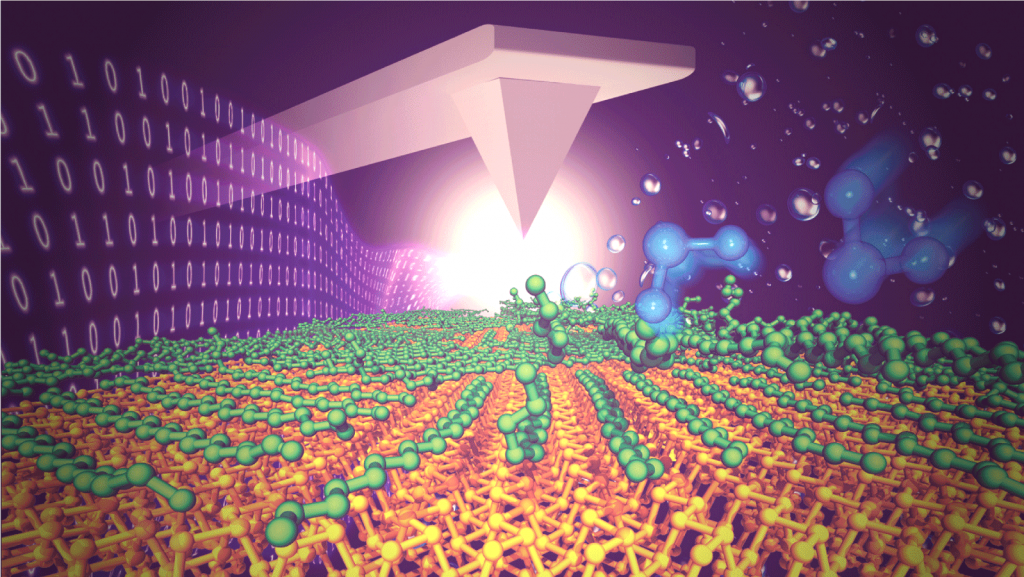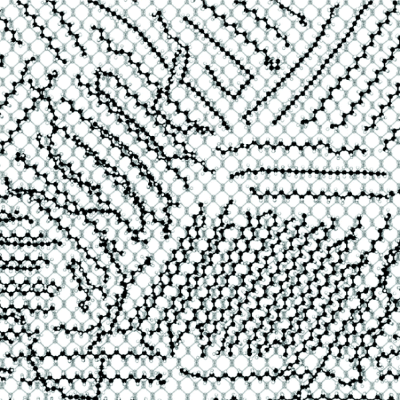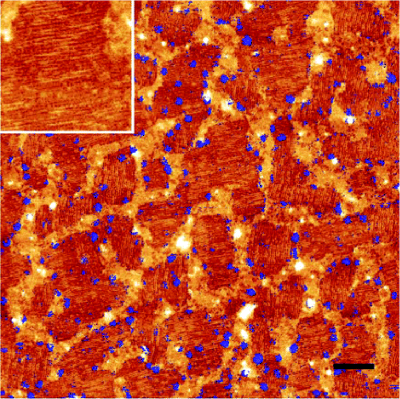
The quest for high-performance materials for applications in several fields of technology has already demonstrated the potential of two-dimensional and layered compounds. The most notable case is that of graphene, a two-dimensional allotrope of carbon. [1] [2] However, other materials with a layered structure exhibit remarkable properties and a huge potential for applications. Among these, black phosphorus, a layered allotrope of phosphorus, is one of the most promising. The interest in black phosphorus emerges especially in terms of its potential for electronic and optoelectronic applications. In 2014, single-layer black phosphorus, or phosphorene, was also fabricated.
However, a major drawback hampers the use of single- and few-layer black phosphorus in real life: as in many other allotropes, black phosphorus reacts quite wildly with several agents in ordinary environments, such as water and oxygen. As a result, black phosphorus is essentially useless in air or wet atmosphere, as it rapidly gets oxidized. In other words, we have potentially great materials, but we cannot use them directly for applications in direct contact with air.
What if we were to protect the extremely sensitive black phosphorus layer with inert, more atmosphere-resistant materials?
Looking for materials that are essentially inert and that interact weakly with other materials, we ended up with linear alkanes. The elongated structure of alkanes allows to form compact structures onto planar or pseudo-planar surfaces. If the coverage is efficient, the black phosphorus layer would be protected by a layer of alkanes, keeping most of its intrinsic properties essentially unchanged. This actually happens because long-chain alkanes tend to form well-aligned structures on several surfaces, as in the cartoon below.

The process for protecting black phosphorus with alkanes is therefore quite easy: we just need to spread a thin layer of selected alkanes, which are in the liquid phase at room temperature, over the black phosphorus surface. Done.
Based on this idea, we performed molecular dynamics simulations to see what happens when you actually spread black phosphorus with liquid alkanes. We already applied molecular dynamics simulation with success to the study of materials for electronics.[3][4]
The result is not trivial: liquid phases mean that the structure of alkanes is extremely disordered, and you could expect formation of large amorphous and unstructured aggregates onto black phosphorus. To our surprise, however, spreading linear alkanes (tetracosane in this case) over black phosphorus resulted in the spontaneous formation of a well-packed protective layer. This is a representative snapshot extracted from simulations.

The alkane layer cover efficiently a large fraction of the exposed surface area. Moreover, DFT calculations confirmed that the interaction between alkanes and black phosphorus is essentially quite weak. Surface passivation with alkanes should therefore affect only marginally the electronic properties of black phosphorus.
Motivated by the computational predictions, experiments were also performed, confirming that alkane forms a compact layer on the surface that is able to protect black phosphorus from oxidation: the regions where oxidation of black phosphorus seem to occur are those that are apparently covered less efficiently with alkanes.

Despite the issues related to environmental stability, applications of two-dimensional phosphorus start to see the light. However, the properties of novel materials need to be tested in real-life scenarios. In this context, the full predictive power of computational modelling is unravelled, by providing properties of materials beyond ideality and models of suitable experimental processing. Part of this work has recently been published on Nanoscale: [5]
https://pubs.rsc.org/en/content/articlelanding/2019/NR/C9NR01155B
References
[1] Redox-switchable devices based on functionalized graphene nanoribbons. D Selli, M Baldoni, A Sgamellotti, F Mercuri. Nanoscale 4 (4), 1350-1354, 2012
[2] Evidence of benzenoid domains in nanographenes. M Baldoni, F Mercuri. Physical Chemistry Chemical Physics 17 (3), 2088-2093, 2015
[3] Correlation between gate-dielectric morphology at the nanoscale and charge transport properties in organic field-effect transistors. A Lorenzoni, M Muccini, F Mercuri. RSC Advances 5 (16), 11797-11805, 2015
[4] Theoretical insights on morphology and charge transport properties of two-dimensional N, N′-ditridecylperylene-3, 4, 9, 10-tetra carboxylic diimide aggregates. A Lorenzoni, F Gallino, M Muccini, F Mercuri. RSC Advances 6 (47), 40724-40730, 2016
[5] Epitaxial multilayers of alkanes on two-dimensional black phosphorus as passivating and electrically insulating nanostructures. A Lorenzoni, F Mercuri et al. Nanoscale 11 (37), 17252-17261, 2019